Early on in her work Martha Rosler addressed public space and commercial urban development – and not only in the United States but also in Frankfurt. Who is it who shapes this space and in line with what ideals? Who can live here and how? And how can artistic practices make this visible?
Martha Rosler belongs to the generation of artists who in the 1970s began to expand their critique of institutions like the museum to include an examination of public space in general. In Rosler’s early photo-text installation “The Bowery in Two Inadequate Descriptive Systems” (1974–5) and in the exhibition series she organized “If You Lived Here…” (1989) she looked at homelessness in New York, for example, and how it was connected with commercial urban development. She also repeatedly produced works about her own neighborhood, the Brooklyn district of Greenpoint, which is affected by environmental pollution and gentrification.
Rosler is interested in the stories that urban space relates when you start to scratch beneath its surface. And vice versa: What version of history a city tries to communicate through its architectural surface. The fact that this often reveals the displacement of other narratives motivates her work, which is politically engaged: “My politicized practice began when I saw that […] there are always things to be told that are obscured by the prevailing stories.”
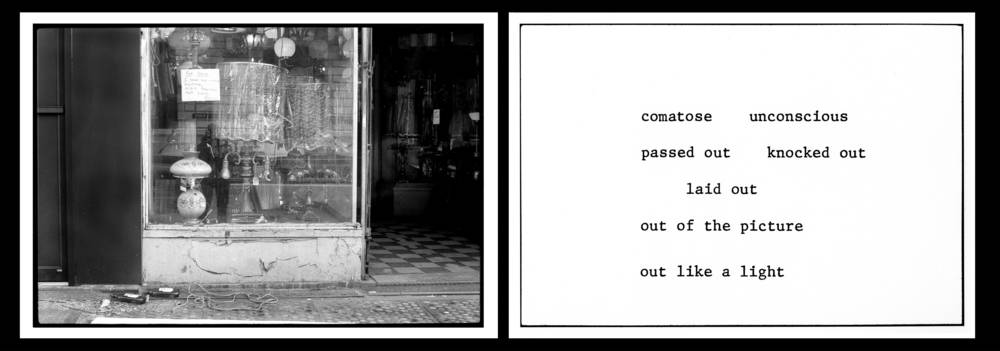
My politicized practice began when I saw that […] there are always things to be told that are obscured by the prevailing stories.
Site-specific explorations
In Germany, for example, on the occasion of the documenta 12 (2007) she searched for traces of the strategic importance that accrued to Kassel during World War II. That same year at the Sculpture Projects in Münster she placed architectural symbols from the Nazi era at various locations in the city to make their latent ideological connection visible.
In the 1990s, Martha Rosler's first exhibitions in Europe brought her to Frankfurt: For example “In the Place of the Public”, a photo series about the airport as a place of transit, which is now also on show in the SCHIRN. Moreover, from 2005 to 2009 she also taught at the Städelschule. During this time her exhibition “Location, Location, Location” (2008) was created in Portikus, an exhibition space attached to the art academy. Here Rosler explores Frankfurt’s urban space and its design by peeling away various layers: from the branding of the city on its surface down to the stories that are forgotten beneath it. With the exhibition Rosler addressed topics around which her work had long revolved: urban planning and building policies, property and financial speculation, gentrification, and in all of this how marginalized groups get rendered invisible.
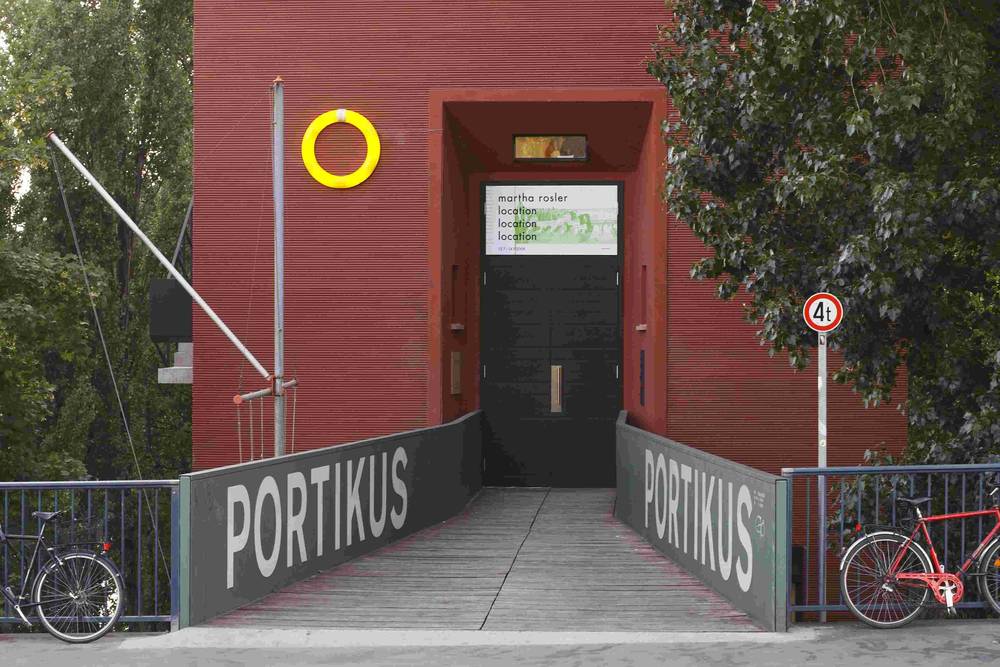
Location, location, location
When in 2008 Rosler showed her work in the Portikus, the exhibition space had only been on the small island beneath the Alte Brücke (Old Bridge) over the River Main for two years after standing for many years on the former site of the old municipal library; the latter had largely fallen victim to a bombing raid in 1944 with little more of it left over than the portico, from which the Portikus got its name. As we all know “location, location, location” is the mantra of every real-estate investment. As a prominent location the Alte Brücke now became the starting point for the threads Rosler then spun about Frankfurt’s history and its current cityscape.
Anyone walking towards the exhibition was greeted by a banner sporting the phrase “Brückenfreiheit” (Freedom of the Bridge). It recalled the fact that in earlier times the bridge was not part of the city proper and set its own laws, the Freedom of the Bridge. Rosler promptly moved a replica of the “Brickegickel” (bridge rooster), which to this day ornaments the bridge standing on a crucifix, to the interior of the Portikus. It is a reminder of an old legend according to which the architect of the Old Bridge sacrificed a rooster to the devil so as to be able to complete his building on time.
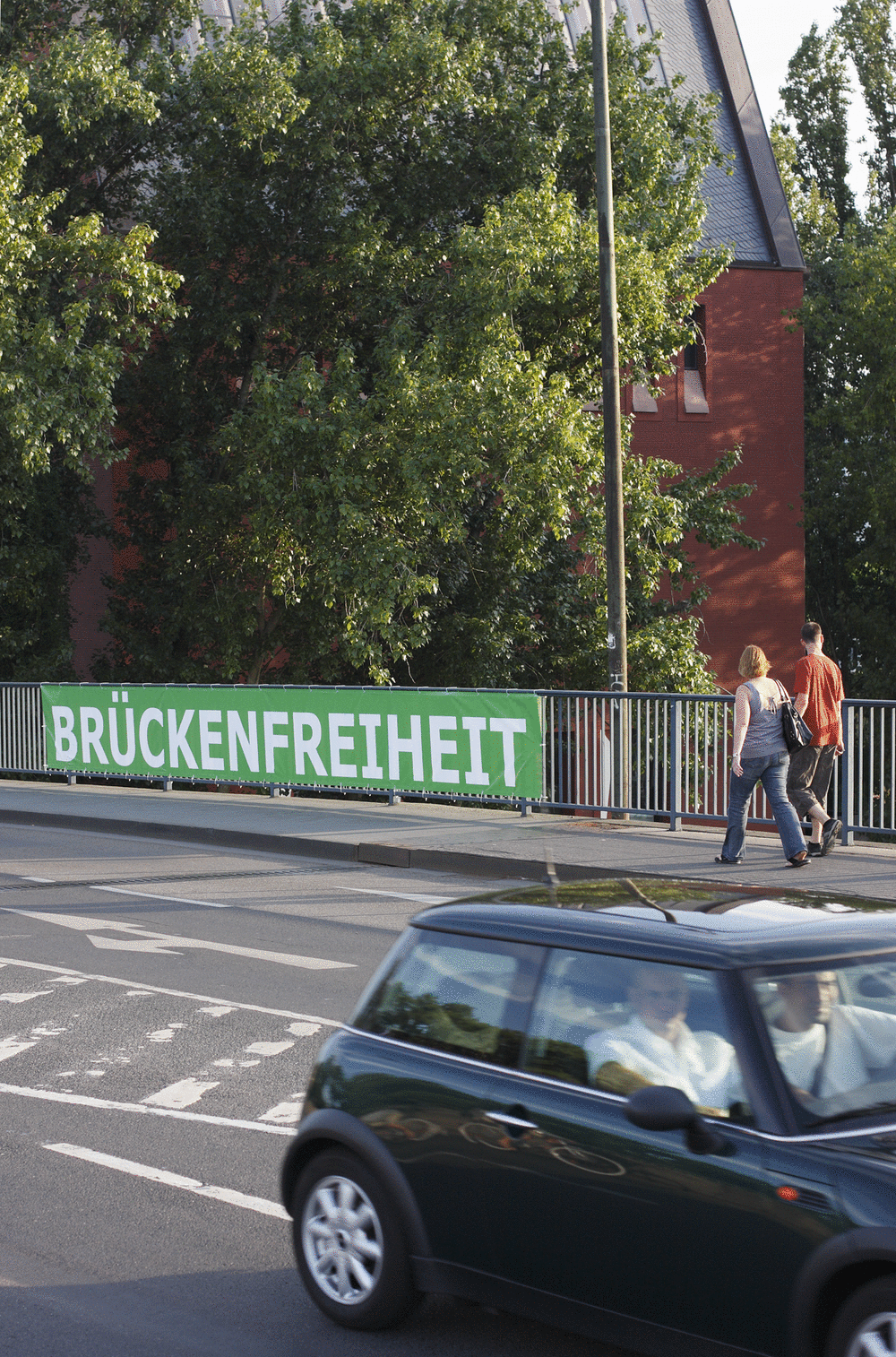
City-Branding: “Mainhattan” as a Brand
The importance of construction for Frankfurt is immediately apparent when you stand on the bridge, as it affords an excellent view of the carefully composed skyline: skyscrapers towering up to form a triangle, picturesquely framed by a row of historic buildings. The view has become virtually emblematic of how the city sees itself, namely as a little “Mainhattan”: Frankfurt as a global, modern business location which simultaneously has the knack of preserving history and tradition. Many of the skyline buildings accommodate players in the global banking and finance sector. This also goes for the Eurotower, which was home to the European Central Bank until 2014. In front of the Eurotower stands the monumental “Euro” sculpture by Ottmar Hörl, which has become a symbol of the city for many tourists and one they enjoy posing before for photos. Another version of this sculpture took pride of place in Portikus and although smaller than the original at a height of 5 meters it almost seemed like a caricature, given that in the course of the exhibition the global economic crisis reached its climax. Among other things, the crisis was triggered by intensive property speculation. Next to the sculpture, Rosler installed a beamer with a live screening of XETRA, the electronic trading system used by Frankfurt Stock Exchange.
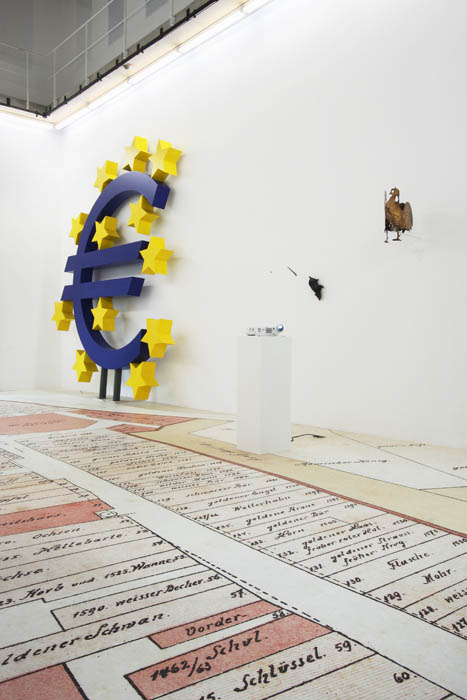
At the time of the Portikus exhibition, the ECB had just announced the winner of the tender for its future location in Ostend: Wolf D. Prix von Coop Himmelb(l)au. The new headquarters was built on the former site of the old wholesale market, the now heritage-listed[JG1] Grossmarkthalle. Not only was this a historical place for trade, during the Nazi era it was also an assembly point for Frankfurt’s Jews; more than 10,000 were kept here before being deported to concentration camps. Today, a simple memorial marks the historical spot.
Beneath the Pavement: Traces of Jewish History
It was important to Rosler to refresh people’s memories concerning the city’s Jewish history: As a result, she had a map of the Jewish ghetto known as the Judengasse (literally Jews’ Lane) printed on the floor of the Portikus. In the early Modern period, the Judengasse (from 1462 to about 1800 it was home to the Jewish population of Frankfurt) was one of the largest Jewish ghettos in Germany. Located outside the city walls and not far from the Old Bridge it ran from the Jewish cemetery on Börneplatz to what is today Konstablerwache. Although it was crowded and cramped, the ghetto was also one of the most important centers for Jewish life in Continental Europe. When you walk through Frankfurt today with its modern architecture little remains as a reminder of this history. It was not until 2021 that the Jewish Museum started an interdisciplinary project known as the METAhub Festival enabling visitors to experience the history of the Jewish ghetto first-hand.

ECB Headquarters in Frankfurt, photo: Boris Roessler/ DPA, Image via spiegel.de
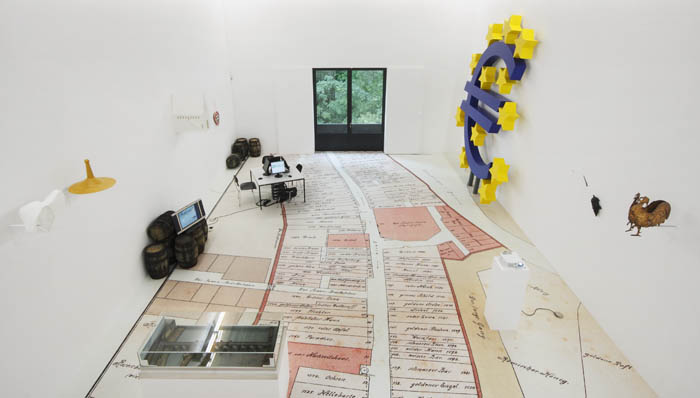
Other items in the exhibition recalled the long history of antisemitic discrimination. For example, a rat with its tail cut off referred to the Rattenhäuschen (Rats’ House) on the Old Bridge. When Frankfurt suffered from a plague of rats in the Middle Ages this was where local citizens could bring the rats they had killed and receive a heller or penny for each one. The undertaking was financed by fines paid by Jews, who were then immediately linked to the antisemitic symbol of the rat. Other exhibits in the presentation such as a yellow ring on the facade or historic depictions of the so-called “Judenhut” or Jewish cap also referenced the legal requirement that Jews and Muslims be distinguishable from non-Jews and non-Muslims when outside their communities – a law enforced during the early Modern period.
Rosler’s search for different stories which coexist in the same space in Frankfurt such as on the site of the former wholesale market, also highlighted uncomfortable truths such as the fact that during the Third Reich the incitement against Jewish people was based largely on the concept of the enemy as a “Jewish capitalist” – a stereotype that dates back to the Middle Ages and still persists today in the guise of conspiracy theories about “Jewish financial domination”.
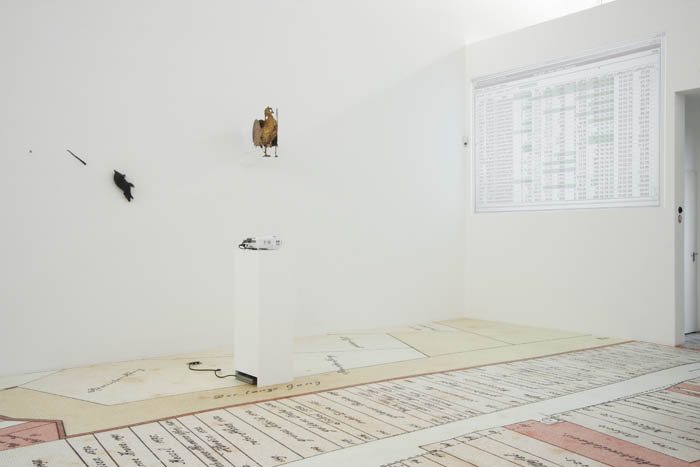
Marketable Nostalgia: Commercial Historical Images
While in the 1980s the city wanted to erect a number of administrative buildings over what remained of the Judengasse – an undertaking that was only partly prevented as a result of civil protest, in more recent construction projects allusions to the past are more welcome. For the new Portikus, the architect Christoph Mäckler designed a building that combines elements of traditional architecture with post-modern influences. On the occasion of her exhibition, Rosler commented critically with a look at the building that it fitted somewhat too smoothly into the marketing of Frankfurt as a modern city that was nevertheless deeply aware of its tradition. She planted the Portikus by way of a small model in the new building’s interior: As such, the exhibition space itself became an exhibit and consequently part of the urban configuration that Rosler was portraying.
Her observations of how building policies, city marketing and a specific historical image are all interconnected are revealed pointedly 15 years later in the New Old City: Modeled on the Old City as it was in the 19th century and built between 2012 and 2018 it is simultaneously a tourist attraction, commercial space, and a set of facades for high-end apartments. While the city refinanced its building project through the sale of the new condominiums and by leasing out retail space, the owners profited from the picturesque attractiveness of the “location”. Meanwhile, the ravages that World War II had visited on downtown Frankfurt were replaced by nostalgically transfigured image of the past.
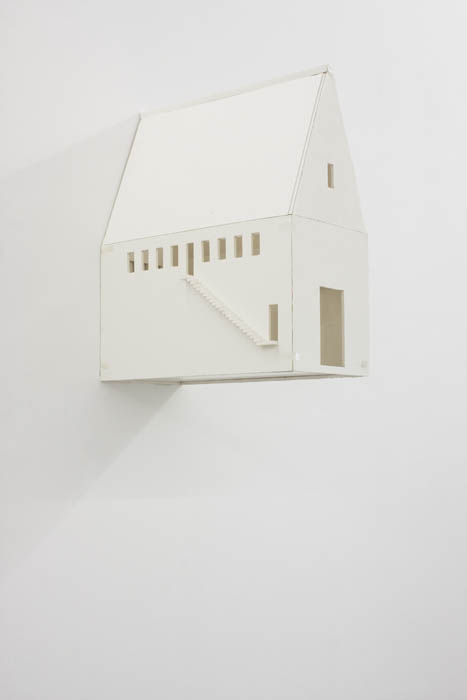
In “Location, Location, Location” the city comes across as a palimpsest, as a place where history is deposited and inscribed but also repeatedly erased and written over. When different historical processes overlap in this manner, there need to be new negotiations on repeated occasions to determine what becomes visible in the cityscape and should be part of the local identity: “In short, a city embodies and enacts a history. In representing the city, in producing counterrepresentations, the specificity of a location and its histories becomes critical.”









